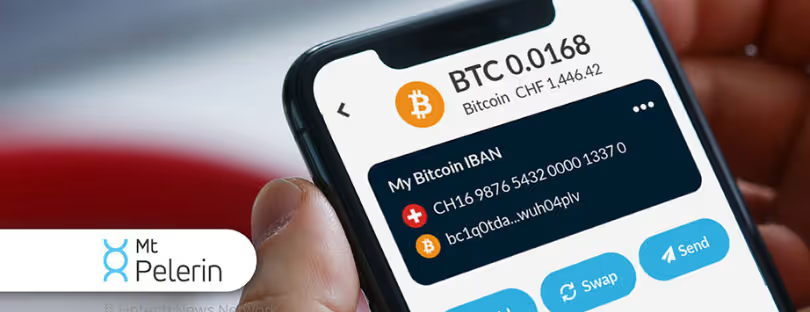
Amazon & Starlink: Revolutionizing Satellite Internet
Billions of people around the world don’t have reliable access to broadband. Poor connectivity means limited access to modern communications, education, health services, and other important resources, which can create an economic disadvantage for unserved and underserved communities.
The satellite communications market is expected to reach $83.25 billion by 2028 from $38.98 billion in 2021, at a CAGR of 11.45 percent over the forecast period (2022 – 2028). This market has been growing rapidly due to various factors such as increasing demand for high-speed internet connectivity, rising adoption of connected devices, and the need for reliable and secure communication networks in remote areas where traditional infrastructure is limited or nonexistent. Moreover, advancements in satellite technology, including the development of low-earth orbit (LEO) constellations, have made satellite communications more cost-effective and efficient, further fueling the market growth. With the increasing demand for data and connectivity, satellite communications are expected to continue to grow and evolve in the coming years.
Amazon’s Project Kuiper vs. SpaceX’s Starlink: The Race for Global Satellite Connectivity
Amazon will compete with Elon Musk’s SpaceX, which has made significant business in recent months, and others to provide broadband internet globally. SpaceX’s Starlink network already has roughly 4,000 satellites in space.
Amazon’s satellite internet unit, Project Kuiper, will begin mass-producing the satellites later this year. Project Kuiper is Amazon’s initiative to provide fast, affordable broadband to communities around the world that are currently unserved or underserved by traditional internet and communications options. To achieve this goal, Amazon will deploy thousands of satellites in low Earth orbit (LEO) linked to a global network of antennas, fiber, and internet connection points on the ground. amazon satellite internet
LEO is an area of space that extends up to 2,000 kilometers (about 1,243 miles) above Earth. Project Kuiper satellites will orbit between 590 and 630 kilometers (about 367 and 392 miles). Amazon’s satellites’ proximity to the surface of the Earth means they can deliver fast service to customers, making Project Kuiper connectivity effective for uses like video calls, gaming, and high-definition streaming.
Project Kuiper and Amazon’s Satellite Service amazon satellite internet
Project Kuiper’s initial satellite constellation design includes 3,236 satellites. The term “constellation” refers to a group of similar satellites working together with tightly coordinated movements to achieve a common purpose—in this case, providing reliable broadband coverage. Amazon began to research and development on Project Kuiper in 2018. In July 2020, the U.S. Federal Communications Commission (FCC) granted Amazon a license to deploy and operate Project Kuiper satellites.
“We’ll be beta testing with commercial customers in 2024,” Dave Limp, senior vice president of Amazon devices, said at a conference in Washington.
The 2024 deployment target would keep Amazon on track to fulfill a regulatory mandate to launch half its entire Kuiper network of 3,236 satellites by 2026. Dave Limp, who oversees Amazon’s consumer devices business, said the e-commerce company plans to make three to five satellites a day to reach that goal.
The company on Tuesday revealed a slate of three different terminals, or antennas, that will connect customers with its Kuiper satellites in orbit.
The standard customer terminals, 11-inch square antennas, will cost the company less than $400 each to produce and provide internet speeds of 400 megabits per second for customers, Amazon said in a statement.
Project Kuiper: Amazon’s Ambitious Plan to Bring High-Speed Internet to Everyone
Project Kuiper has three main parts: ground infrastructure, satellites, and customer terminals. Amazon’s ground infrastructure includes gateway antennas that securely send and receive customer data to and from satellites, along with telemetry, tracking, and control (TT&C) antennas that keep the satellites properly operating. Global networking connects those gateway antennas to the internet, public cloud, or private networks.
Satellites make up the second part of the project. They operate in low Earth orbit (LEO) and relay data traffic to and from our gateway antennas and customers. Lastly, customer terminals are the technology that Project Kuiper customers use to receive broadband service. The terminals combine antennas and processors into a single, compact system to deliver connectivity.
Amazon’s largest antenna model, designed for enterprise, government, and telecommunications applications, will be 19 by 30 inches in size and put out internet speeds of up to 1 gigabit per second—fast enough to download a high-definition feature-length movie in roughly 30 seconds.
When will Project Kuiper service be available?
How fast will Project Kuiper’s internet be? amazon satellite internet
How much will Project Kuiper service cost?
Concerns About Project Kuiper amazon satellite internet
While Project Kuiper has the potential to bring fast, affordable broadband to underserved communities, there are concerns about whether the service will be accessible and affordable to everyone. To address this issue, Amazon has stated that it will work with local partners and governments to provide service to areas that are difficult to reach or have limited infrastructure.
The company also plans to offer a range of pricing and service options to meet the needs of different customers and regions, and to use its experience in low-cost device manufacturing to keep prices down. Additionally, Amazon has committed to investing in digital skills training and other programs to help people take advantage of the opportunities offered by the internet.









